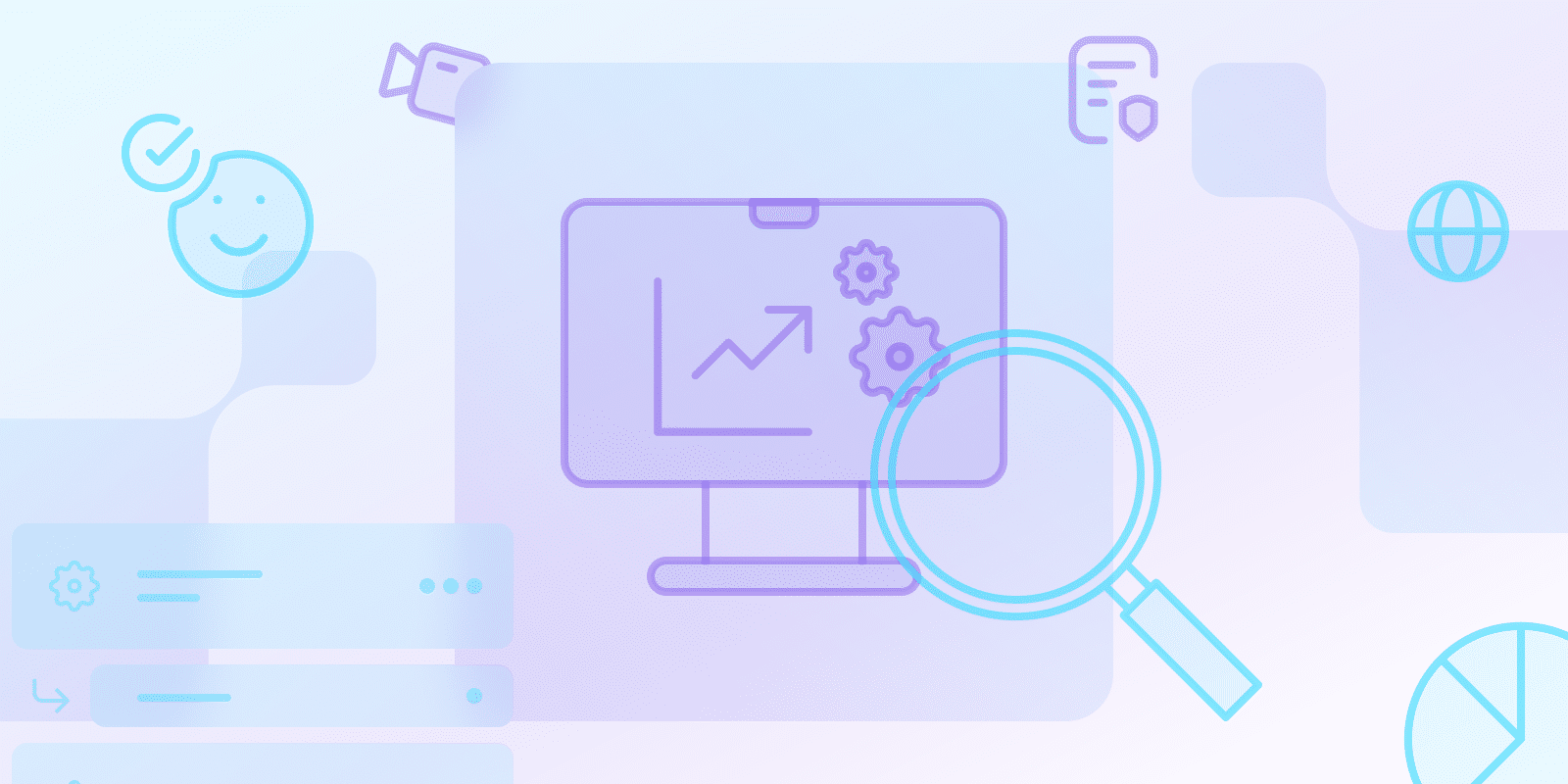Operações habilitadas para nuvem
O que é monitoramento de desempenho de nuvem?

O que é monitoramento de desempenho de nuvem?
O monitoramento de desempenho de nuvem é quando você rastreia e analisa sua infraestrutura baseada em nuvem regularmente. Você deve observar o desempenho, e isso também envolve seus serviços e aplicativos.
No monitoramento de desempenho de nuvem, você analisa dados de várias fontes. Depois de fazer isso, você deve procurar soluções para problemas que podem afetar a segurança, o desempenho e a disponibilidade/tempo de atividade.
O monitoramento de desempenho de nuvem requer agregação de dados em tempo real. É necessário para utilizar recursos, identificar gargalos e buscar oportunidades de redução de custos.
Você deve monitorar proativamente o desempenho da sua nuvem para descobrir e resolver problemas antes que os usuários sejam afetados. Isso também é crucial para a prestação de serviços.
Quais são as principais diferenças entre monitoramento de desempenho de nuvem e monitoramento de segurança de nuvem?
Embora o monitoramento de desempenho de nuvem e o monitoramento de segurança de nuvem se complementem, eles não são a mesma coisa. Aqui estão alguns componentes principais do monitoramento de desempenho de nuvem:
- O monitoramento de desempenho em nuvem prioriza a detecção e mitigação de riscos de segurança (por exemplo, acesso não autorizado e violações de dados).
- O monitoramento de desempenho de nuvem analisa a utilização de recursos e encontra gargalos, ao mesmo tempo em que mede a capacidade de resposta.
- Você deve personalizar as ferramentas de monitoramento de nuvem para otimizar melhor os dados.
O monitoramento de segurança em nuvem, por sua vez, tem estas características:
- Você pode gerar vários alertas com o monitoramento de segurança em nuvem, mas você precisa priorizar e analisar cuidadosamente – caso contrário, você corre o risco de fadiga de alerta.
- O monitoramento de desempenho precisa de ferramentas extras para lidar diretamente com as preocupações de segurança.
- Monitoramento de segurança é importante, mas não para insights de desempenho de UX e funcionalidade de aplicativo.
Você precisa alinhar monitoramento de desempenho de nuvem com seus objetivos de negócios se quiser que sua estratégia seja eficaz. Identifique o principal indicadores-chave de desempenho (KPIs) dentro da confiabilidade, segurança e eficiência antes de implementar o monitoramento de desempenho da nuvem.
| Recurso | Monitoramento de Desempenho em Nuvem | Monitoramento de Segurança em Nuvem |
|---|---|---|
| Foco principal | ||
| Objetivo Principal | Utilização de recursos e medição de desempenho | Detectando e mitigando riscos de segurança |
| Métricas principais | Tempos de resposta, latência de rede, uso de recursos | Acesso não autorizado, potenciais violações de dados |
| Características de monitoramento | ||
| Gerenciamento de alertas | Foco em gargalos de desempenho e otimização | Gera múltiplos alertas que exigem priorização cuidadosa |
| Requisitos de Ferramentas | Ferramentas de monitoramento personalizáveis | Requer ferramentas de segurança especializadas adicionais |
| Impacto Operacional | ||
| Impacto na Experiência do Usuário | Melhora diretamente a funcionalidade e a responsividade do aplicativo | Impacto direto limitado na UX e no desempenho do aplicativo |
| Alinhamento de Negócios | Vinculado à confiabilidade, eficiência e KPIs de desempenho | Focado na mitigação de riscos e conformidade |
Como funciona o monitoramento de desempenho da nuvem e quais são seus principais benefícios?
As ferramentas de monitoramento de nuvem coletam dados de tráfego de rede, infraestruturas, métricas diferentes e logs de aplicativos.
Você deve implementar um monitoramento de desempenho de nuvem eficaz se usar o serviço de nuvem. Os KPIs a serem considerados são tempos de resposta, utilização de recursos e latência de rede.
Você deve usar esses KPIs para:
- Otimização de desempenho em nuvem
- Prevenção de interrupções
- Experiências online
- Identificação e diagnóstico de gargalos
- Otimização de desempenho
- Otimizando UX e operações
Como o monitoramento em nuvem pode otimizar custos?
Comece monitorando regularmente o uso de recursos por meio de ferramentas de monitoramento de terceiros, painéis de provedores de nuvem ou ambos. Você deve então alterar as configurações de nuvem com redução de custos e otimização de desempenho em mente; no entanto, certifique-se de não interromper o funcionamento de tudo.
Você precisa monitorar o uso da nuvem regularmente depois disso, revisando as configurações ainda mais quando necessário. Isso pode ajudá-lo a obter mais de seus recursos; por exemplo, você deve desligar suas máquinas virtuais em horários de pico se elas ficarem ociosas durante a maior parte do dia.
Quais são as principais ferramentas de monitoramento de nuvem e quais são as mais adequadas para diferentes necessidades?
Considere estes fatores ao escolher uma ferramenta de monitoramento de nuvem para suas necessidades:
- Custo: Qual é o seu orçamento; você pode usar uma versão gratuita/de código aberto ou precisa de uma assinatura?
- escalabilidade: A ferramenta pode acomodar as crescentes necessidades de uma infraestrutura em expansão?
- Facilidade de uso: Qual é a curva de aprendizado e como é sua interface?
- Integrações: Escolha uma ferramenta que se integre com AWS, Azure ou qualquer software de nuvem que você use.
- Métricas: A ferramenta tem os dados de desempenho que você precisa rastrear?
Ferramentas populares de monitoramento em nuvem
- Amazon CloudWatch: Use se precisar monitorar recursos na AWS.
- Site24x7: Use se precisar monitorar na AWS, GCP e Azure.
- Zabbix: Código aberto e pode precisar de mais conhecimento técnico, mas é útil se você tiver essas habilidades.
Pesquise diferentes opções e considere usar Testes Gratuitos para testar essas ferramentas.
Conclusão
Você precisa usar o monitoramento em nuvem para identificar problemas antes que eles se tornem sérios e resolvê-los. Também é necessário para otimização de custo e desempenho, embora você ainda tenha que fazer algum trabalho manual para obter o melhor deles. Escolha uma ferramenta com base em suas necessidades e defina KPIs claros, enquanto monitora e ajusta regularmente ao longo do tempo. Isso é crucial se você deseja economizar dinheiro e evitar interrupções.